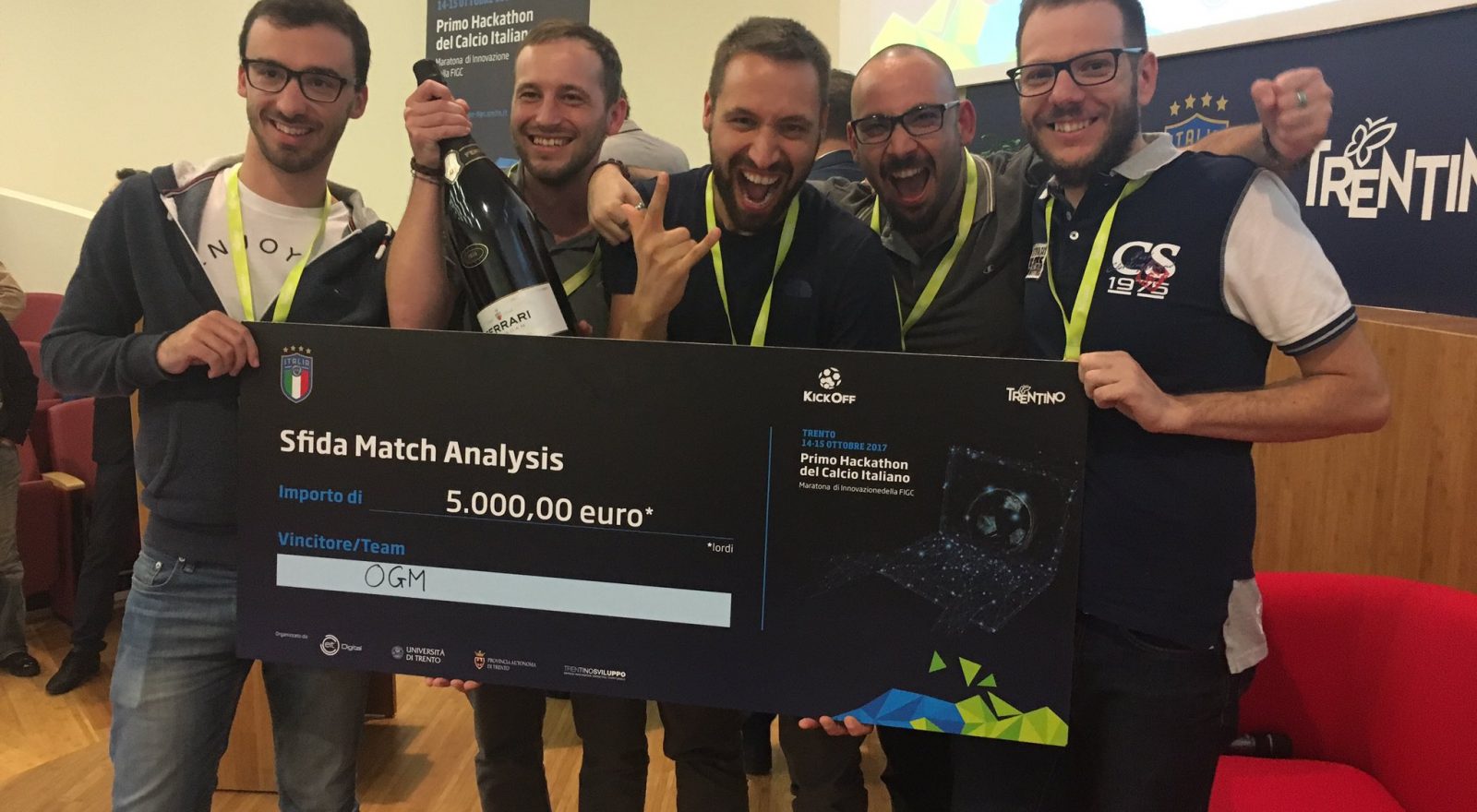Here is the “DNA of Soccer”
Marco De Nadai, Ph.D. student with the FBK Mobs Unit, is part of the winning teams of the first hackathon oon Italian soccer in the "Match Analysis" category. The algorithm developed by the researchers makes it possible to represent a dangerous game action through a simple sequence of letters, similar to those characterizing the human genome
What happens when you combine professional interest in data analysis and passion for soccer? For example, you can win the first Italian “hackathon” dedicated to the realm of the ball. The team that did it, whose name was GMO, was composed of five young researchers, including Marco De Nadai, a PhD student with the Mobile and Social Computing Lab (Mobs), Gianni Barlacchi, from the University of Trento (and a member of the Mobs group), Paolo Cintia (CNR), Alessio Rossi and Luca Pappalardo (University of Pisa).
The hackathon, organized by the Italian Soccer Federation (Federazione Italiana Gioco Calcio, FIGC) on October 14 and 15, at the University of Trento Department of Humanities, was the first ever in the world for a soccer federation with the aim of to develop new technologies to change Italian soccer.
The five researchers, who bring home a 5000 euro prize, have won in the “Match Analysis” category, devoted to the use of big data in the soccer world. Their project (“Action Mining”) is an algorithm that associates a series of actions on the field with a dangerousness index: the tool, effective and inexpensive, may prove to be very useful for coaches both in the preparation phase of a match and in post-match analysis. With the hope that this new technology solution can help boost the national team, that has just been through a historic failure to qualify for the next world championships.
“All got started with the sharing of two big passions: data analysis and soccer. We are not only researchers, the tive of us are soccer fans as well, and this aspect has pushed us to participate in this hackathon, ” Marco De Nadai says.
The basic idea is to improve the techniques currently in use. “The current approach to analyzing and preparing matches is to review the videos of the previous matches, identifying important sequences to show them to the coaches or the players. However, this is a long and costly method: the analysis actually takes into account individual events, such as crosses or corner kicks, and can last about 3-4 hours per game, not counting any subsequent discussion with coach and players. For this reason, only very hih level teams can afford it, isince they can hire people who work full time on the analysis of the match».
The method developed by the researchers, derived from text analysis, represents a significant step forward compared to the traditional approach, since is has the upside of focusing on an entire action rather than on a single event. Specifically, we rebuild the action starting from a sequence of geographic information, i.e. the positions occupied by players at a certain event (e.g. a pass, a cross or a penalty kick). Each of these positions is then assigned a letter of the alphabet so that an action can be analyzed as a sequence similar to DNA.
«In this way, even the most complex actions can be represented by a simple sequence of letters, which is associated with a dangerousness index, providing very useful information to the coach to learn about the opponent’s strengths and needs, but also to correct the mistakes of his team.
In addition, the analysis takes place in a matter of minutes, not hours, and can be applied simultaneously to a sequence of matches, “De Nadai concludes.

